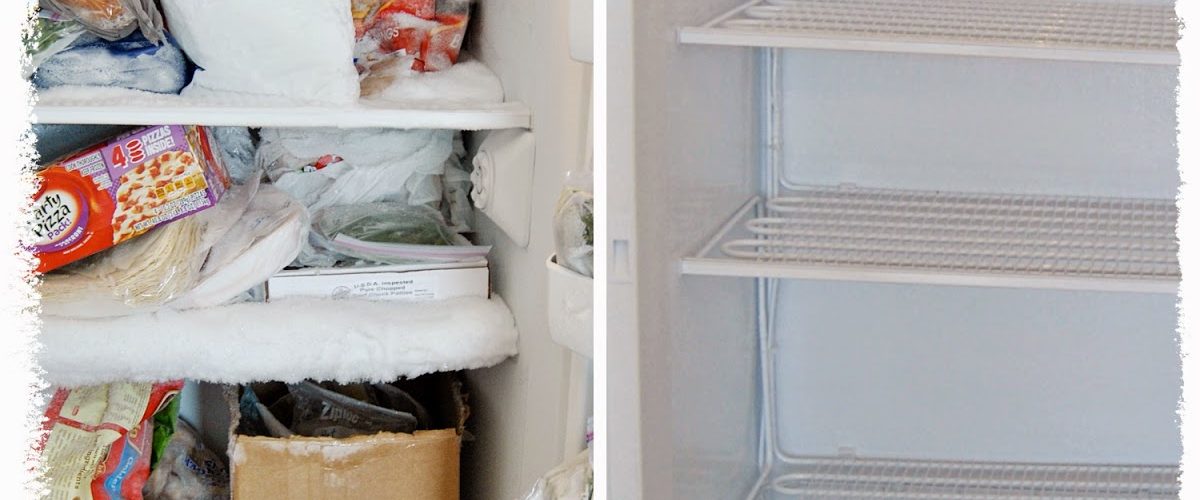Over time, ice can build up on the walls of your freezer. This is especially a problem in older freezers when the seal on the door is weaker. The sheet of ice can reduce space in your freezer and reduce the efficiency of your appliance, resulting in poorer temperature regulation and higher monthly energy bills. Whether you need to defrost your freezer in preparation for a move or are simply trying to improve the function of your appliance, defrosting can be a hassle. Fortunately there are a few simple actions you can take to speed the process.
Contents
Clean Out The Freezer
The first step is to remove all of the items in the freezer. In more extreme cases there may be ice build up on the food items as well. Usually these can simply be brushed off to remove the ice. If necessary, rinse these items in warm water to loosen the ice before removing it. Once all the food is out of the freezer, remove the drawers as well. These can be cleaned seperately and will speed the process. Then either use the dial to turn off the freezing unit or unplug the freezer itself. Keep in mind that if there is a refrigerator attached to your freezer, it will also lose power. Be sure to lay down towls or newspapers at the base of the freezer to soak up any water that may leak out.
Remove Large Pieces of Ice
If there are any loose pieces of ice in your freezer, remove them and place them in the sink. However, don’t try to pry pieces loose. If they are securely stuck to the walls, you may damage your freezer.
Using Warm Water
A source of heat will speed the process. Boil a large pot of water and wait for it to cool very slightly before placing it inside the freezer. The heat and rising steam will help melt the ice. Use a washcloth to dab hot water over the icy walls as well. Then close the freezer door and allow it to sit for 15 minutes. Once the water in the pot has cooled, replace it with a new bowl of warm water.
Using Electricity
There are several appliances that can greatly decrease the time needed to defrost your freezer. However, melting water and electricity can be a dangerous combination, so if you wish to use these methods, be sure to be careful. A hair dryer can help spot treat stubborn ice patches. For more extensive work, a wet/dry shopvac turned on high is a good option. Even a simple fan propped up to the level of the freezer will help to circulate the cool air and cause the ice to melt more quickly. Be sure to remove any ice chunks that come loose to save yourself the time required to melt them.
Preventing Frost in the Future
Once your freezer is completely defrosted, there are a few actions you can take to prevent this problem from developing as quickly again in the future. First, wash all the walls and shelving in a mix of water and baking soda. This will not only clean up the last of the ice, but also leave your freezer smelling fresh. Then, dip a cloth in a small amount of vegetable oil and brush it along all the surfaces of the freezer. This will prevent ice from reforming for much longer.
Now that your freezer is clear, you are free to return all of your items and turn the cooling back on. Enjoy the increased space and improved cooling of your appliance.



